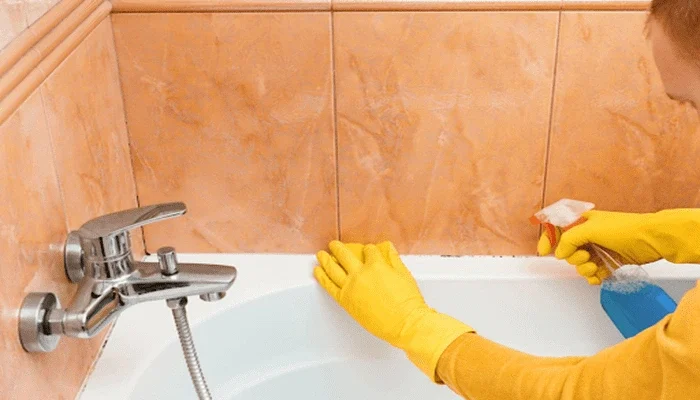Mould is an unwelcome guest in many homes. It’s not just an eyesore; it can also be a serious health hazard. Addressing indoor mould isn’t merely about improving aesthetics; it’s crucial for maintaining a healthy living environment.
This article aims to provide you with practical and effective strategies to combat indoor mould and safeguard your health. From understanding what mould is to learning how to prevent and remove it, we’ll cover all the essential information.
Common health issues arising from mould exposure, such as respiratory problems, allergies, and other conditions, highlight the importance of taking proactive measures.
Understanding Indoor Mould
Indoor mould refers to fungal growth that occurs inside a building. Mould can appear in various forms, such as black, green, white, or even pink. Common types of indoor mould include Aspergillus, Cladosporium, and Stachybotrys (also known as black mould). Mould thrives in moist environments and can develop rapidly if conditions are favourable.
Mould spores are ubiquitous and can enter homes through windows, doors, air conditioning systems, or even attached to clothing and pets. Once these spores find a damp spot, they begin to grow and spread. Common sources of moisture that promote mould growth include leaky roofs, windows, pipes, high humidity levels, and even wet clothes left to dry indoors.
Identifying mould early can help prevent extensive damage and health risks. Common signs of mould presence include visible spots on walls, ceilings, or floors; a persistent musty smell; and the appearance of water stains or warping on surfaces.
Health Risks Associated with Mould Exposure
Exposure to mould can cause various health issues. Some common illnesses and conditions triggered by mould include respiratory infections, allergic reactions, and asthma attacks. Understanding the full scope of mould health effects is essential, as mould exposure can also cause skin rashes, eye irritation, and sinus congestion.
Certain populations are more vulnerable to mould-related health problems. Children, elderly individuals, and those with pre-existing respiratory conditions, such as asthma or chronic obstructive pulmonary disease (COPD), are at a higher risk. Additionally, people with weakened immune systems may experience more severe reactions to mould exposure.
Health effects can vary from short-term to long-term. Short-term symptoms might include headaches, sneezing, red eyes, and a runny nose. Long-term exposure to mould can lead to more severe conditions such as chronic respiratory issues or lung infections. Prompt intervention is essential to protect health, especially for individuals in high-risk groups.
Prevention Techniques to Minimise Mould Growth
Preventing mould growth involves several techniques that focus on controlling moisture and maintaining indoor air quality.
First and foremost, maintaining proper ventilation is crucial. Making sure your home has enough air flow in wet places like bathrooms, kitchens, and laundry rooms is important. Using air fans and opening windows can help lower the humidity.
Regular home maintenance is another key aspect. Promptly repairing leaks in roofs, walls, and pipes will prevent water from accumulating and creating a conducive environment for mould. Checking areas like basements and attics for moisture regularly can also help avert potential problems.
Using mould-resistant materials and products can make a significant difference. When renovating or building a new home, consider materials like mould-resistant drywall or paint. Additionally, installing a dehumidifier can help maintain optimal humidity levels, making it less likely for mould to thrive.
Adopting safe cleaning practices is essential to prevent mould recurrence. Cleaning up spills and drying wet areas promptly, avoiding carpet in high-moisture areas, and regularly cleaning and maintaining HVAC systems can go a long way in keeping your home mould-free.
Effective Mould Removal Methods
When it comes to mould removal, homeowners can choose between DIY solutions and professional services. While minor mould issues can often be handled independently, more extensive infestations may require professional intervention.
For those who opt for DIY mould removal, it’s essential to follow a step-by-step guide to ensure safety and effectiveness. Begin by wearing protective gear, such as gloves and a mask, to avoid exposure to mould spores.You can stop future growth by finding and fixing the source of the water.
Clean the area with a mix of water and soap. For stubborn mould, a solution of bleach and water (1 cup of bleach to 1 gallon of water) can be effective. Scrub the area thoroughly and dispose of any contaminated materials, such as carpets or insulation, that cannot be adequately cleaned.
Several products and tools are recommended for effective mould removal, including mould-killing sprays, dehumidifiers, and air purifiers. Ensure that the area is well-ventilated during and after cleaning to prevent inhalation of any remaining spores.
Post-removal measures are crucial to ensure mould doesn’t return. Monitor the area for signs of moisture and mould, and maintain a clean, dry environment. Regularly inspecting and cleaning potential problem areas can help prevent future growth.
Long-Term Strategies to Protect Your Health
Building a mould-resistant environment and taking regular precautions is an ongoing process. Regular home inspections are vital for identifying and addressing potential mould issues early on. Consider having a professional inspect your home annually, particularly in areas prone to moisture.
Improving indoor air quality is another long-term strategy that can significantly benefit your health. Using air purifiers, maintaining a clean home, and ensuring proper ventilation can help reduce allergens and prevent mould growth.
Careful planning during home renovations or upgrades can also contribute to a mould-resistant environment. Opt for materials that resist moisture and mould, and ensure proper installation and sealing to prevent leaks.
Monitoring for health symptoms and seeking medical advice if needed is an essential part of maintaining good health. If you or your family members experience persistent respiratory issues, allergies, or other symptoms that may be related to mould exposure, consulting a healthcare professional is advisable.
Conclusion
In summary, combatting indoor mould and protecting your health involves a multi-faceted approach. Understanding what mould is and the health risks associated with exposure sets the stage for taking preventive measures. By maintaining proper ventilation, repairing leaks, using mould-resistant materials, and employing safe cleaning practices, you can significantly reduce the risk of mould growth.
When it comes to getting rid of mould, the level of growth affects whether you choose to do it yourself or hire a professional. Following a thorough cleaning and post-removal routine is crucial. Long-term strategies, including regular inspections and improving indoor air quality, are essential for creating a mould-resistant environment and safeguarding your health.
Taking proactive steps to address mould issues not only improves the look of your home but also ensures a safer and healthier living space. By staying diligent and informed, maintaining a mould-free home is well within reach.
Revive Fitness Routine with These Proven Tips










Comments